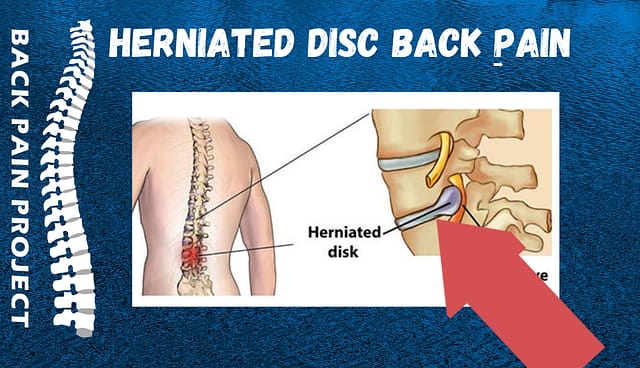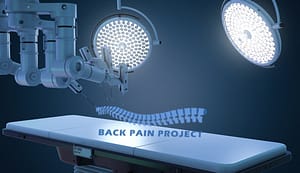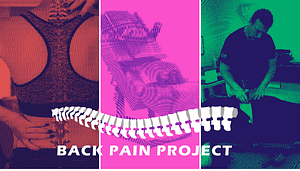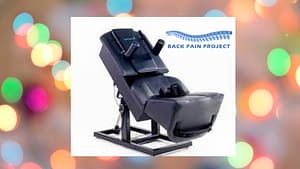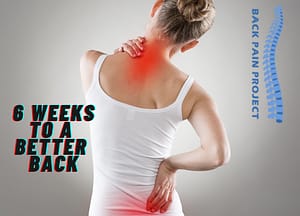Spinal Decompression
Spinal Decompression is a great treatment for trochanteric hip pain. The muscles that surround the hip are affected adversely. Spinal Decompression helps activate hip muscles to bring about more complete healing. This also helps you avoid hip replacement years down the road. The Back Pain Project offers The Back on Trac 4th generation spinal decompression units. This allows for faster healing of your hip pain.
Spinal Decompression is a helpful treatment modality for nerve compression caused when the piriformis muscle goes into spasm and compresses the sciatic nerve. Piriformis syndrome usually starts with pain, tingling, or numbness in the buttocks. Spinal Decompression reduces swelling of the intervertebral disc decreasing pressure and reducing pain associated with disc bulges. The Back Pain Project can help your lower back pain due to Piriformis Syndrome.
Greater trochanteric pain syndrome (GTPS) is a common cause of lateral hip pain, seen more commonly in females between the ages of 40 and 60. GTPS is the cause of hip pain in 10–20% of patients presenting with hip pain to primary care, with an incidence of 1.8 patients per 1000 per year. The pain comes from the tendons of the glute medius and glute minimus muscles near the greater trochanter of the hip. Trochanteric pain responds to Spinal Decompression therapy by reducing the inflammation of the glut medius and glut minimus tendons, and the irritated spinal nerve roots and discs.
Myofascial pain occurs pressure on sensitive points in the muscles causes pain in seemingly unrelated body parts. The syndrome often happens after repeated injury or muscle overuse. The condition tends to be chronic and the areas affected are unspecific. Spinal decompression for Myofascial Pain Syndrome studies indicates that the effectiveness of Spinal Decompression was clearly a benefit for Myofascial Pain Syndrome.
Spinal Decompression not only promotes healing in facet syndrome. but also stimulates the generation of endorphins that control pain regardless of the location. Spinal Decompression therapy interrupts the pain process by delivering electrons back to the injured cells to aid in healing. Facet arthropathy is pain caused by compression of the facet joints in the lower back.
Cauda Equina Lower Back Pain and Spinal Decompression
Spinal Decompression seems to be a beneficial physical agent for chronic low back pain (LBP), and it is commonly used in clinical rehabilitation practice. Cauda equina syndrome occurs when the nerve roots in the lumbar spine are compressed, cutting off sensation and movement. The pain distribution for cauda equina is Lower limb weakness and intermittent changes in sensation, such as numbness, particularly in the areas you would sit on. In some cases, there are urinary and/or bowel problems, such as retention or incontinence. Spinal Decompression is helpful in avoiding the dangers of surgical intervention.
Dr.McKay may require you to have an MRI to determine if your spine is stable enough for spinal decompression.
Spondylosis and Spinal Decompression
Spondylosis Spinal Decompression therapy does not involve taking any medications, and many patients prefer to avoid taking medications. Studies have so far found that Spinal Decompression therapy does not have serious side effects when used properly by a doctor. Spondylosis is a general term for age-related wear and tear affecting the spinal disks in your spinal column.
Spondylolisthesis benefitted by Spinal Decompression
Studies indicate that when treating spondylolisthesis, that Spinal Decompression is a viable option in the conservative treatment of discogenic back pain, with a positive clinical result of more than 90% efficacy, not only in the short-term but also in the long-term, with lasting benefits.
Symptoms of neurogenic claudication are related to posture and may show up as pain in the low back and/or leg as muscle cramps. The combination of the presence of spinal stenosis with certain back postures such as arching puts pressure on lumbosacral nerve roots. Spinal Decompression aids in reducing the pain associated with neurogenic claudication by reducing swelling and inflammation.
Failed Back Surgery Syndrome is a very generalized term that is often used to describe the condition of patients who have not had a successful result with back surgery or spine surgery and have experienced continued pain after surgery. This is where non-invasive Spinal Decompression can be of benefit to patients with such symptoms. The Back Pain Project has helped 100’s of people over the last 30 years regain some of their lives back after failed back surgery.
Spinal Disc Herniation/Bulges causing lower back pain benefitted by Spinal Decompression
Bulging discs occur when the outer shell becomes weaker, allowing the disc to bulge to one side of the spinal canal, or flatten. You may experience this after an injury to the spinal disc. Bulging discs occur when the outer shell becomes weaker, allowing the disc to bulge to one side of the spinal canal, or flatten. This can cause tremendous amounts of back pain. Spinal Decompression is an effective tool in minimizing lower back pain from herniated discs often with little or no side effects. A bulge is often considered to be a minor disc herniation.
Spinal stenosis, a narrowing of the spinal canal can put pressure on the spinal cord and the nerves within the spine. It commonly occurs in the neck and lower back. The condition is often caused by age-related wear and tear. Symptoms include pain, numbness, muscle weakness, and more serious cases that can cause impaired bladder or bowel control. Spinal Decompression can reduce the pain caused by inflammation of the spinal cord and spinal nerves associated with spinal stenosis
Spinal Decompression for sciatica is an incredible way to treat painful sciatica symptoms. It is an FDA-approved, painless, and non-invasive treatment option for patients suffering from sciatica symptoms that won’t go away. Spinal Decompression has several components that allow it to create changes in the body. Spinal Decompression therapy will reduce the level of inflammation in the body surrounding the sciatica nerve as well as increase blood flow. This will help reduce lower back pain due to sciatic nerve pain.


